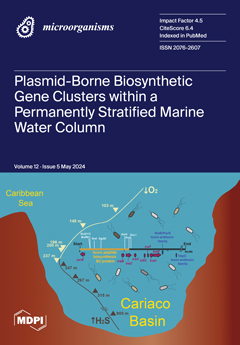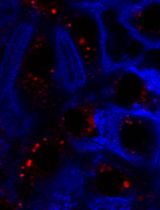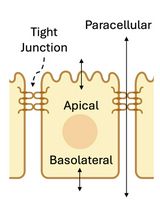- EN - English
- CN - 中文
In Vitro Co-culture of Bacterial and Mammalian Cells to Investigate Effects of Potential Probiotics on Intestinal Barrier Function
体外共培养细菌与哺乳动物细胞用于研究潜在益生菌对肠道屏障功能的影响
发布: 2025年06月20日第15卷第12期 DOI: 10.21769/BioProtoc.5361 浏览次数: 2349
评审: Alba BlesaAnonymous reviewer(s)

相关实验方案
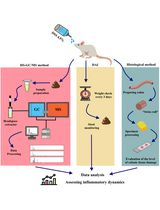
HS-GC-MS 方法用于 DSS 诱导性结肠炎模型中 IBD 动态变化的诊断
Olga Yu. Shagaleeva [...] Natalya B. Zakharzhevskaya
2025年03月20日 2989 阅读
Abstract
Human intestinal barrier function is crucial for health. Beneficial microbes, such as commensal gut bacteria and probiotics, are known to contribute to the regulation of this barrier function. Interactions between bacteria and human intestinal cells can be analyzed by co-culturing bacteria with mammalian cells in vitro. Here, we describe a method to assess the effect of individual bacterial strains on intestinal barrier function using automated transepithelial electrical resistance (TEER) measurements. Caco-2 cells are used as a model of the intestinal epithelium, as these cells spontaneously differentiate into small intestinal epithelial-like cells characterized by tight junctions between adjacent cells. These cells are seeded on polyester filter inserts and cultured for 17 days to form a differentiated monolayer prior to the co-culture experiment. Bacteria are grown on agar, and a single colony is used to prepare a liquid culture in bacterial broth appropriate for the bacteria of interest. On the day of the co-culture experiment, the bacterial culture is resuspended in cell culture medium at the desired concentration. Inserts are transferred to cellZscope cell modules to enable automated TEER measurements, and the medium in the insert is replaced with cell culture medium containing the bacteria of interest. This method allows for intestinal tight junction barrier function to be assessed non-invasively and in real-time in response to probiotics. The use of the automated cellZscope system eliminates the need for labor-intensive manual TEER measurements, which reduces the variability in data that results from human handling and temperature changes that occur when cells are removed from the incubator.
Key features
• Real-time measurement of the effects of aerobic or aerotolerant-anaerobic probiotics on intestinal barrier integrity.
• Automated TEER measurements are achieved by a nanoAnalytics CellZscope instrument.
• Requires at least four weeks to complete one experimental run, including the revival and growth of mammalian cells in flasks, prior to differentiation in inserts.
• Completing the recommended three experimental runs, staggered by one week, takes six weeks.
Keywords: Transepithelial electrical resistance (跨上皮电阻)Graphical overview
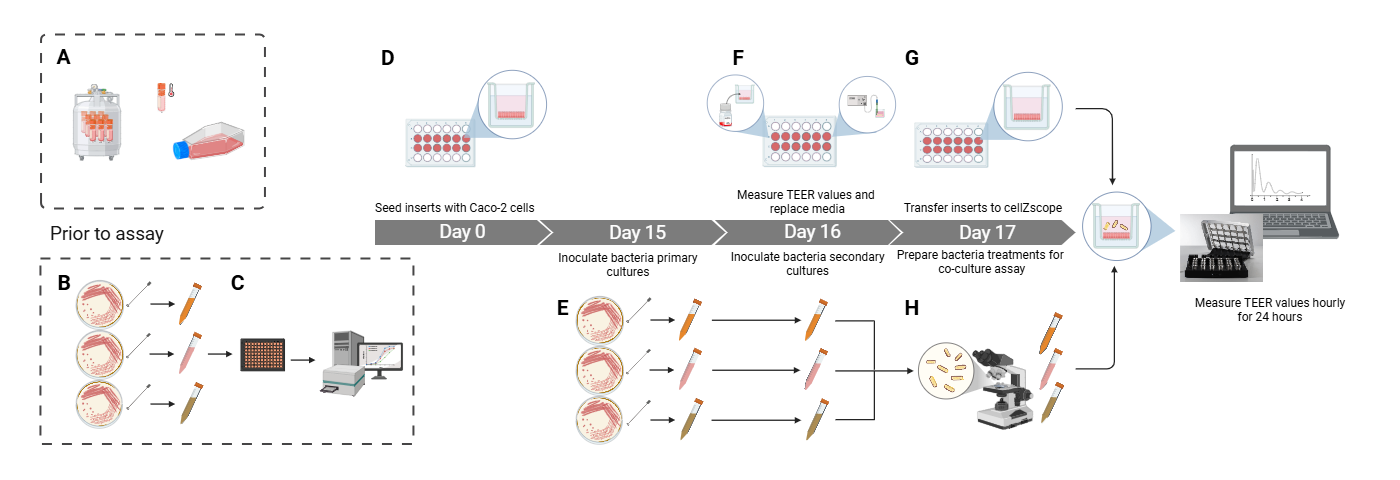
Background
The human intestine not only digests food and absorbs nutrients but also acts as a vital barrier against harmful compounds [1]. The intestinal epithelium, a single layer of polarized cells, plays a crucial role in maintaining this barrier function [2]. Tight junctions (TJs), located at the apical aspect of epithelial cells, seal the paracellular space, restricting the passage of unwanted compounds and potential pathogens while allowing selective nutrient uptake [3]. Intestinal barrier dysfunction, characterized by a "leaky" epithelium, is implicated in various chronic diseases, including inflammatory bowel disease and diabetes [4]. Environmental stressors and dietary factors can compromise barrier integrity, leading to increased paracellular permeability and potential systemic inflammation [5].
Functional foods and beneficial microbes, such as probiotics, have gained attention for their potential to enhance intestinal barrier function [6]. Probiotics, particularly strains of lactobacilli, have been shown to strengthen the epithelial barrier by modulating TJ structure and function. For example, Lactiplantibacillus plantarum and Lacticaseibacillus rhamnosus have been observed to upregulate TJ protein expression, improve barrier integrity, and protect against pathogen-induced barrier disruption [7–10]. Hence, probiotics may represent a promising strategy for enhancing intestinal barrier function and promoting overall health.
We recently demonstrated the barrier-enhancing properties of two probiotic strains in an in vitro model of the intestinal epithelial barrier [12]. The method utilized the immortalized colorectal adenocarcinoma cell line Caco-2 as a model of the small intestinal epithelium [13,14]. This cell line is widely accepted as a model of the intestinal barrier because when cultured to confluence, the cells form a monolayer and spontaneously differentiate into small intestine–like cells expressing morphological and biochemical characteristics similar to enterocytes, including microvilli and TJ between adjacent cells. The barrier function of the TJs was assessed in real-time using transepithelial electrical resistance (TEER). TEER measures the electrical resistance across an epithelial monolayer, providing a sensitive indicator of barrier integrity [15]. These experiments utilized a validated apical-anaerobic model of the intestinal epithelium that mimicked the anaerobic environment of the intestinal lumen, while ensuring the survival of oxygen-requiring intestinal cells [16].
As the apical anaerobic model requires a custom-built co-culture chamber, as well as a modified anaerobic workstation, here we present a simplified version of the protocol, which utilizes an automated cell monitoring system (i.e., cellZscope) and a standard cell culture incubator, both of which can be purchased from a commercial supplier. The protocol can be used to study the effects of aerobic or aerotolerant-anaerobic bacteria on intestinal barrier function using TEER. Note that for studying the effects of live obligate anaerobic bacteria, the apical anaerobic model is needed. Following the co-culture of bacterial and mammalian cells using the methods described, researchers may carry out further downstream analyses to gain insights into the underlying mechanisms of action, for example, gene expression and immunolocalization analyses to investigate the modulation of TJ-related genes and proteins, as described in Zhang et al. [12].
Materials and reagents
Biological materials
1. Cryopreserved stocks of colorectal carcinoma cell line (Caco-2) (ATCC, catalog number: HTB-37, passage 22)
2. Cryopreserved stocks of aerobic or aerotolerant bacteria of interest (in Zhang et al. [12], Lactiplantibacillus plantarum ST-III and Lacticaseibacillus rhamnosus KF7 were used)
Reagents
1. Fetal bovine serum (FBS) (Moregate)
2. Non-essential amino acids (NEAA) (Gibco, catalog number: 11140050)
3. Medium 199 (M199) (Gibco, catalog number: 11150059)
4. TrypLE Express (TrypLE) (Gibco, catalog number: 12605028)
5. Lactobacilli MRS broth (Difco, catalog number: 288130) or other appropriate medium if bacteria of interest are not lactobacilli
6. Lactobacilli MRS agar (Difco, catalog number: 288210) or other appropriate medium if bacteria of interest are not lactobacilli
7. Phosphate-buffered saline (PBS) (Difco, catalog number: 10010049)
8. Type 1 water (Milli-Q, catalog number: ZEQ7000T0C)
Solutions
1. Caco-2 standard growth medium (Std medium) (see Recipes)
2. Caco-2 TEER experimental medium (TEER medium) (see Recipes)
3. MRS agar (see Recipes)
4. MRS broth (see Recipes)
Recipes
1. Caco-2 standard growth medium (Std medium)
| Reagent | Final concentration | Volume |
|---|---|---|
| M199 | 445 mL | |
| FBS | 10% | 50 mL |
| NEAA | 1% | 5 mL |
| Total | 500 mL |
Storage conditions: 4 °C for up to 8 weeks.
2. Caco-2 TEER experimental medium (TEER medium)
| Reagent | Final concentration | Volume |
|---|---|---|
| M199 | 495 mL | |
| NEAA | 1% | 5 mL |
| Total | 500 mL |
Storage conditions: 4 °C for up to 8 weeks.
3. MRS agar
| Reagent | Final concentration | Quantity |
|---|---|---|
| Agar powder | 7% (w/v) | 49 g |
| Type 1 water | 700 mL |
Storage conditions: 4 °C for up to 2 weeks.
4. MRS broth
| Reagent | Final concentration | Quantity |
|---|---|---|
| Broth powder | 5.5% (w/v) | 38.5 g |
| Type 1 water | 700 mL |
Storage conditions: 4 °C for up to 2 weeks.
Laboratory supplies
1. 10 μL pipette tips (Eppendorf, catalog number: 0030078500)
2. 100 μL pipette tips (Eppendorf, catalog number: 0030078543)
3. 200 μL pipette tips (Eppendorf, catalog number: 0030078551)
4. 300 μL pipette tips (Eppendorf, catalog number: 0030078560)
5. 1,000 μL pipette tips (Eppendorf, catalog number: 0030078578)
6. 100 mm diameter Petri dishes (Corning, catalog number: 430167)
7. 10 μL inoculating loops (Sigma-Aldrich, catalog number: I8388)
8. 38 mm magnetic stirring bar (FisherScientific, catalog number: 22-331439)
9. 96-well plates, flat bottom, clear, polystyrene wells (Greiner, catalog number: M3061)
10. 96-well plate sealing film (Sigma-Aldrich, catalog number: Z369667)
11. Cell culture flasks, 75 cm2, filter cap (T-75 flask) (ThermoFisher Scientific, catalog number: 156499)
12. Polyester membrane inserts, 6.5 mm diameter, 0.4 µm pore (Corning, catalog number: 3470)
13. Countess cell counting chamber slides and holder with trypan blue solution (Invitrogen, catalog number: C10283)
14. 15 mL conical centrifuge tubes (ThermoFisher, catalog number: 339650)
15. 1.5 mL microcentrifuge tubes (Eppendorf, catalog number: 0030125150)
16. 0.6 mL microcentrifuge tubes (Sigma-Aldrich, catalog number: T5149)
17. Counting chamber (Marienfeld-Superior, catalog number: 0642110)
18. Hemocytometer coverslips (Carl Roth, catalog number: KHT8.1)
19. Lint-free paper (Kimtech, catalog number: 34155)
20. 2× 1000 mL Duran glass bottles (Schott, catalog number: 218015455)
21. Tweezers, stainless steel (ThermoFisher, catalog number: 12-000-126)
Equipment
1. Biosafety Cabinet A: Class II biosafety cabinet for mammalian cells (Esco, catalog model: NC2-L)
2. Biosafety Cabinet B: Class II biosafety cabinet for bacteria and co-culture (Nuaire, catalog model: NU-540)
3. Centrifuge A: benchtop centrifuge for mammalian cells (ThermoFisher, catalog number: 3376282)
4. Centrifuge B: benchtop centrifuge for bacterial cells [ThermoFisher, catalog model: Multifuge X3 (Ventilated) Centrifuge]
5. 0.5–10 μL pipette (Eppendorf, catalog number: 3123000020)
6. 10–100 μL pipette (Eppendorf, catalog number: 3123000047)
7. 20–200 μL pipette (Eppendorf, catalog number: 3123000050)
8. 30 –300 μL pipette (Eppendorf, catalog number: 3123000101)
9. 100–1,000 μL pipette (Eppendorf, catalog number: 3123000063)
10. Serological pipette controller (ThermoFisher, catalog number: 9541)
11. Warming oven (Memmert, catalog model: UFE 600/230) set to 37 °C
12. EndOhm chamber and cap (World Precision Instruments, catalog model: EndOhm-6G)
13. Epithelial volt/ohm meter (World Precision Instruments, catalog model: EVOM2)
14. cellZscope (nanoAnalytics, catalog model: cellZscope +)
15. Automated cell counter (Invitrogen, catalog model: Countess 3)
16. Microplate reader (Molecular Devices, catalog model: FlexStation3)
17. Microscope A: inverted microscope for mammalian cells (Nikon, catalog number: TS-100)
18. Microscope B: inverted microscope for bacteria enumeration (Nikon, catalog model: Eclipse Ti-S)
19. Incubator A: humidified cell culture incubator for mammalian cells (ThermoFisher, catalog number: 50163013) set at 37 °C, 5% CO2
20. Incubator B: humidified incubator for bacterial cells (Sanyo; catalog number: MCO-18AIC) set at 37 °C
21. Incubator C: humidified incubator for co-culture experiments (ThermoFisher, catalog number: 50163013) set at 37 °C, 5% CO2
22. Magnetic hotplate stirrer (IKA, catalog number: C-MAG HS 7)
23. Vortex (IKA Vortex 3 Shaker, catalog number: 3340000)
24. Autoclave (Tuttnauer, model: 3870EA)
Software and datasets
1. nanoAnalytics (version 4.3.1, 2019)
2. Excel 365 (Microsoft, 21/11/2024)
3. RStudio Build 446 (Posit PBC, 01/03/2023)
Procedure
文章信息
稿件历史记录
提交日期: Jan 29, 2025
接收日期: May 20, 2025
在线发布日期: Jun 11, 2025
出版日期: Jun 20, 2025
版权信息
© 2025 The Author(s); This is an open access article under the CC BY-NC license (https://creativecommons.org/licenses/by-nc/4.0/).
如何引用
Purba, A., Anderson, R. C. and Ulluwishewa, D. (2025). In Vitro Co-culture of Bacterial and Mammalian Cells to Investigate Effects of Potential Probiotics on Intestinal Barrier Function. Bio-protocol 15(12): e5361. DOI: 10.21769/BioProtoc.5361.
分类
微生物学 > 微生物-宿主相互作用 > 细菌
细胞生物学 > 基于细胞的分析方法 > 电生理技术
您对这篇实验方法有问题吗?
在此处发布您的问题,我们将邀请本文作者来回答。同时,我们会将您的问题发布到Bio-protocol Exchange,以便寻求社区成员的帮助。
Share
Bluesky
X
Copy link


